West Kington Church – Wood Lane – Blacksmith’s Forge – Broadmead Brook – Nettleton Shrub
Distance: 1.6 km approx.
Duration: 35-40 mins at average walking pace
Elevation: ↑135m max.; ↓101m min.
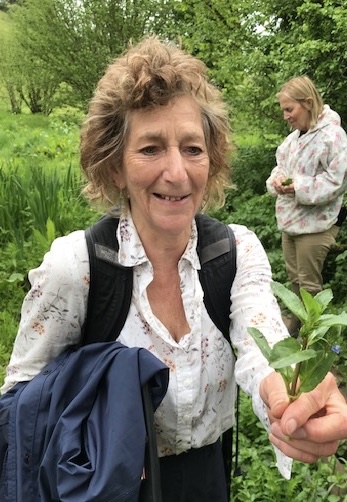
In mid-May, ecologist Ann Skinner led some two dozen local nature-lovers on an expedition to discover a rich diversity of wildlife habitats and the history of land use in the parish of Nettleton.
This blog describes the route. At the foot of this article, Ann provides a list of plants spotted on the walk.
Ancient meadow? – West Kington Church
Church yards are often the last vestiges of ancient meadows. A recent temporary rewilding project in the rear churchyard has resulted in an abundant swathe of cow parsley, an indicator of fertile soil. Patches of nettles indicate soils high in nitrogen.
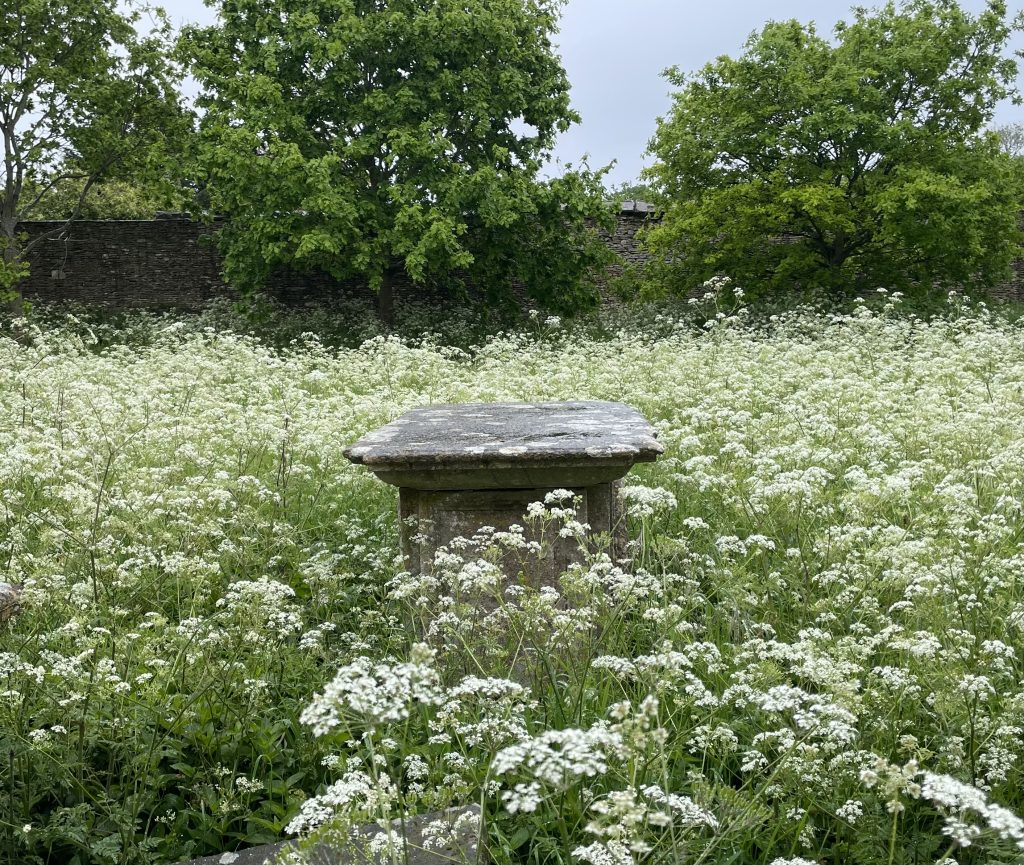
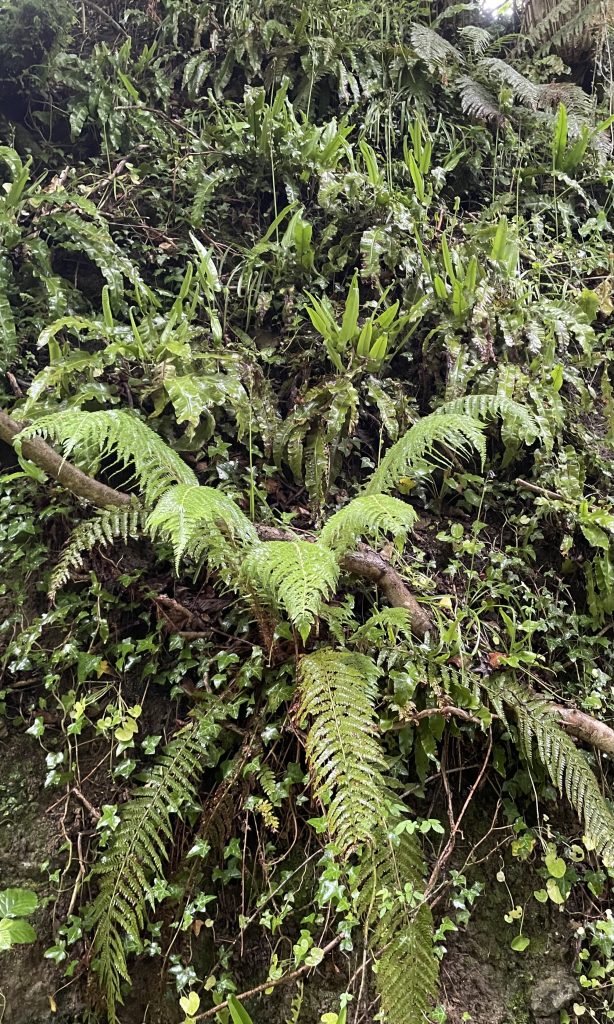
Taking the sunken lane leading to the Old Post Office, we noted the dry-stone walls so characteristic of the Cotswold landscape. These are a refuge for small creatures such as lizards and beetles, as well as lichens, mosses and liverworts. The linear nature of such walls and hedgerows is vital for the movement of species through the landscape.
Ferns, such as the hart’s-tongue and maidenhair spleenwort, cling to the damp limestone crags which loom over the path.
We crossed the brook by way of Wood Lane.
Freshwater and wetland flora: Broadmead brook
The Broadmead is a source of the Bybrook, a limestone-rich tributary of the River Avon. The water quality suffers from agricultural runoff.
The once abundant native crayfish are now under threat by the invasive signal crayfish, introduced from North America.
Dippers, previously widespread, have also become rare. The birds nest beneath bridges and are the only British species able to walk under water.
Freshwater and wetlands flora found here include water crowfoot, great willowherb, watercress, red campion, comfrey, water forget-me-not and yellow flag iris.
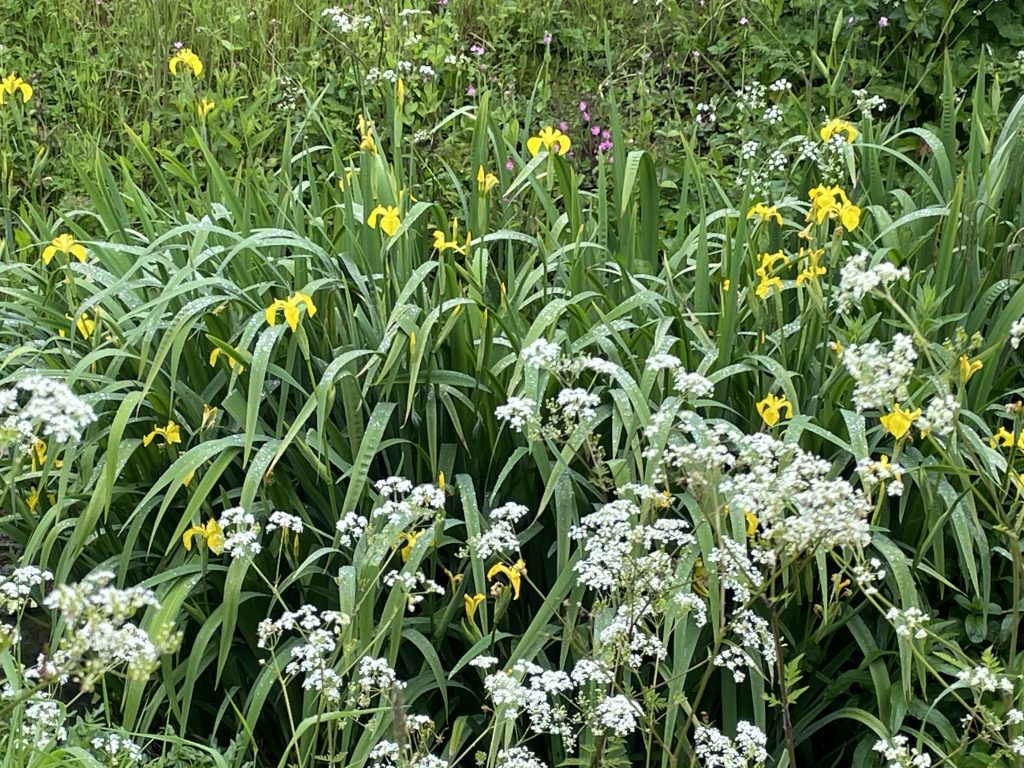
Verges and drystone walls around Blacksmith’s Forge
At the Forge, we took the road leading to West Kington Wick.
The verges are rich in lady’s bedstraw. When dried, this plant smells of new-mown hay, and it was used as stuffing for mattresses, particularly those of women about to give birth. Further plants found here include meadowsweet, white dead-nettle (which looks like a nettle but doesn’t sting, hence it is ‘dead’), wild angelica, shining cranesbill, herb-robert (red stems), bugle, garlic mustard (tastes of garlic and mustard) and lungwort.
Growing on the drystone wall are stonecrop and ivy-leaved toadflax, which is negatively phototropic, that is, its stems grow away from light, to get purchase on the wall.
As the road becomes shaded with overhanging trees, including elm (with asymmetrical leaf bases), the vegetation changes to shade tolerant plants, including the grass, wood mellick, which grows in ancient woodland and along shady banks; townhouse clock, an indicator of ancient woodland and harbinger of spring; wood sorrel, which has a lemon flavour; and yellow archangel.
Hazel was important for the woollen industry. When coppiced, the young stems are sufficiently pliable to be woven into hurdles for sheep corrals.
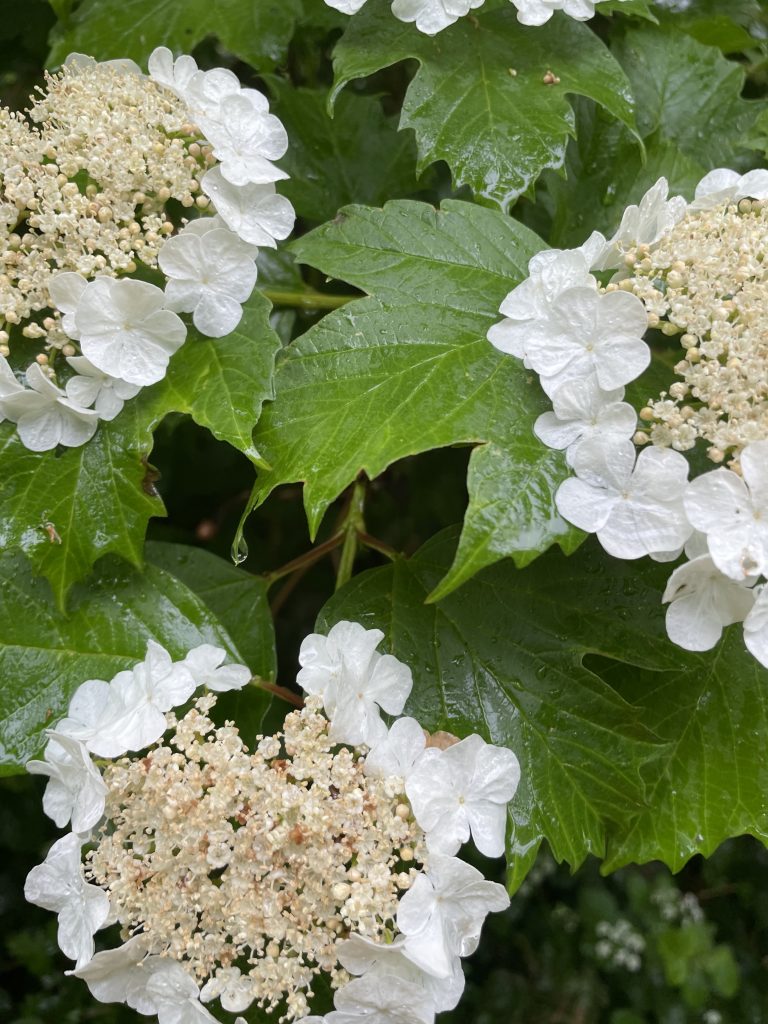
We turned left off the road to follow a footpath alongside Broadmead brook. Here can be found pignut and guelder-rose (Viburnum opulus) which thrives on damp soil. An old alder with roots grasping the riverbank stands sentinel at the bridge. In past times, alders were used in the production of charcoal and clogs.
Wetlands
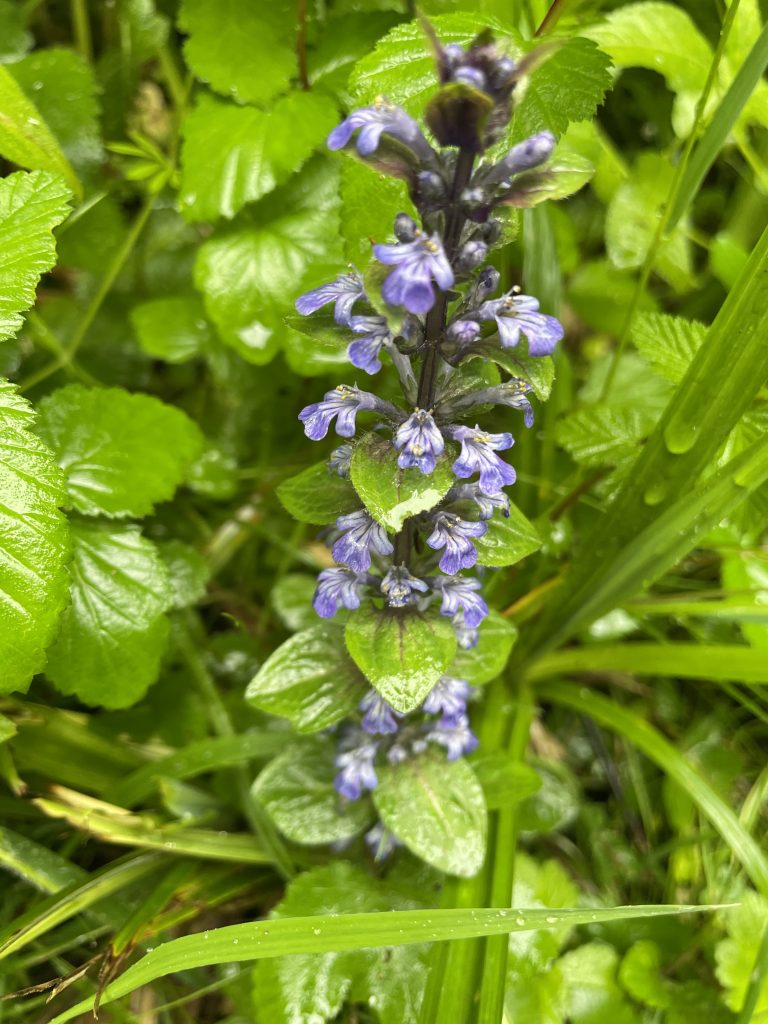
The wetlands and marsh meadow around the stone bridge contain marsh-marigold, water mint, bugle and brooklime (Veronica beccabunga).
Bearing right after the bridge, we crossed the meadow and passed through the gate to the river valley.
Limestone grassland
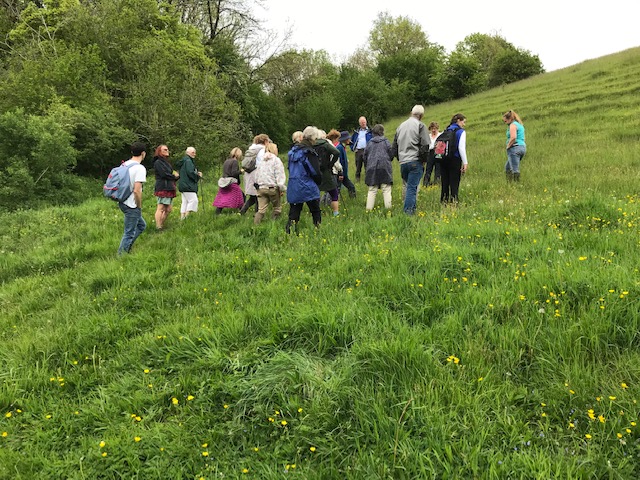
The valley overlies oolitic limestone which was laid down during the Jurassic Period (195-135 million years ago) when the region was beneath a shallow sea.
The limestone grasslands were created through centuries of sheep grazing, evidence of which can be seen in the horizontal sheepwalks. These are similar in appearance to lynchets, which are of different origin (watch out for the forthcoming blog on the lynchets east of Burton).
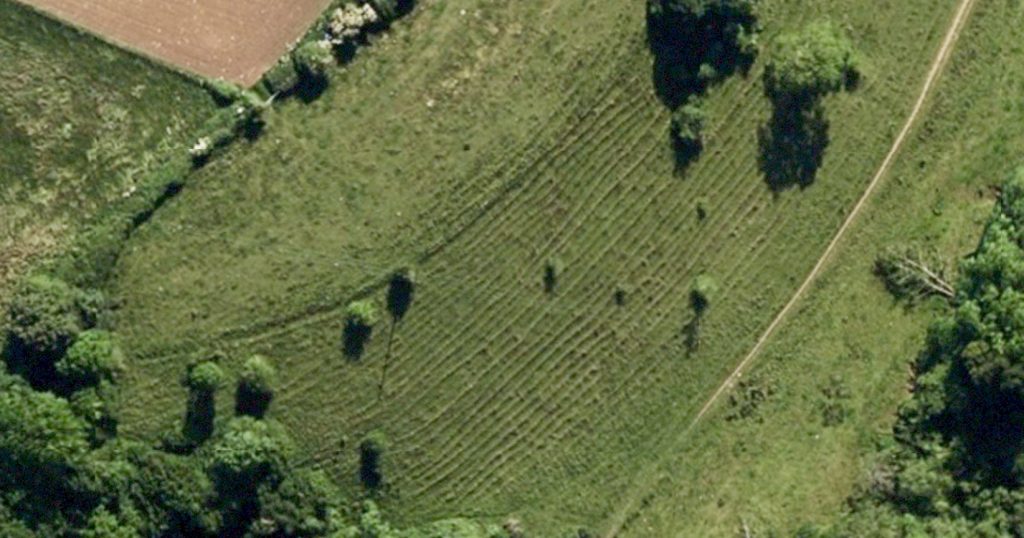
A detour could be made at this point to view the site of the Temple of Apollo at Nettleton Shrub.
Wildwood
The stepped path up through Home Wood is rich in bluebells, wild garlic and wood anemone, flowering before the tree canopy closes over. The bluebells tend to thrive on the upper slopes, while the wild garlic prefers the moist lower ground. These flowers are indicators of ancient woodland.
Through the wooden gate at the top of the steps, we turned left, keeping strictly to the broad path to mitigate the spread of chalara ash dieback. The path emerges on Wood Lane. A right turn here returned us to West Kington Stud and the church.
Further information
An information sheet written by Ann Skinner is available here. See also the next section, with a list of plants.
Message from event organiser Julia Howey
Thank you to everyone who came on the guided walk on Sunday morning. Ann, as usual, was a fount of knowledge and everyone, including those who have lived in the parish for many years, discovered new plants and learned new facts about the very special place we live in.
Ann sent a list of the most interesting/characteristic species which she remembers seeing today. I know that a couple of people were taking notes, so if you can add any more please let me know. It would be great to keep adding to the list as the summer progresses.
Churchyard
- Germander speedwell Veronica chamaedrys
- Ox-eye (or moon) daisy Leucanthemum vulgare
- Primrose Primula vulgaris
- cowslip Primula veris
- cow parsley or Queen Anne’s lace Anthriscus sylvestris
Sunken lane to West Kington village
- celandine Ranunculus ficaria
- hart’s tongue fern
- bluebell Hyacinthoides non-scripta
- garlic mustard/Jack go to bed at noon Alliara petiolata
- Ground elder or goutweed Aegopodium podagraria
- Lords and ladies, cuckoo pint Arum maculatum
- Dog’s mercury Mercurialis perennis
In the river/banks
- Fool’s water-cress Apium nodiflorum
- Water forget-me-not Myosotis scorpioides
- Water mint Mentha aquatica
- Pendulous sedge Carex pendula
- great willow-herb, codlins and cream Epilobium hirsutum
- Comfrey Symphytum officinale
- Purple loosestrife Lythrum salicaria
- Brooklime Veronica beccabunga
Grass verge in village
- Herb-Robert Geranium robertianum
- Shining crane’s-bill Geranium lucidum
- Lady’s bedstraw Galium verum
- Wild angelica Angelica sylvestris
- Bugle Ajuga reptans
- Red campion Silene dioica
- Meadow crane’s-bill Geranium pratense
Stone wall
- Squirrel tail moss
- Ivy-leaved toadflax Cymbalaria muralis
- Stonecrop Sedum sp.
More shaded road verge (and track down to river)
- Elm Ulmus sp. (NB always has asymmetric leaf base)
- Guelder rose Viburnum opulus
- Wood melic Melica uniflora
- Bluebell Hyacinthoides non-scripta
- Stitchwort Stellaria holostea
- Pignut Conopodium majus
- Town-hall clock Adoxa moschatellina
- Goldilocks buttercup Ranunculus auricomus
- Yellow archangel Lamiastrum galeobdolon
- Wood anemone Anemone nemorosa
- Sweet woodruff Galium odoratum
- Wild garlic, Ramsons Allium ursinum
- Enchanter’s nightshade Circaea lutetian
- Wood sorrel Oxalis acetosella
Wet meadow near river
- Marsh marigold, kingcups, mollyblobs Caltha palustris
- Cuckoo flower or Lady’s smock Cardamine pratensis foodplant of orange tip butterfly
- Yellow flag Iris pseudacorus
- Brooklime Veronica beccabunga
- Bulbous buttercup Ranunculus bulbosus (with reflexed sepals)
- Meadowsweet Filipendula ulmaria
- Limestone downland (can have up to 40 plants growing in a single square metre)
- Sweet vernal grass Anthoxanthum odoratum
- Quaking grass Briza media
- Upright brome Bromus erectus
- Salad burnet Sanguisorba minor
- Ribwort plantain Plantago lanceolata
- Hoary plantain Plantago media
- Dwarf or picnic thistle Cirsium acaule
- Horseshoe vetch Hippocrepis comosa
- Common bird’s-foot trefoil, Eggs and bacon Lotus corniculatus
- Rockrose Helianthemum nummularium
- Common knapweed Centaurea nigra
- Mouse-ear hawkweed Pilosella officinarum (the lemon flowered creeping plant with silver undersides to the leaves)
If people want to know more, the best thing is to:
- join Wiltshire Wildlife Trust and go on some of their excellent guided walks,
- join Wiltshire Botanical Society and go on field outings to learn from very knowledgeable people
- get a good flower book…I use The Wildflower Key by Francis Rose which is great and introduces you to the different families, but you might find this a little technical if you are an absolute beginner
NB you really DON’T have to know much, WWT and WBS are delighted to have new members who are keen on plants and want to learn….and its not all about being able to remember the latin names!
Ann
I know that you were all amazed by Ann’s knowledge and the fact that she has freely given so much of her time to our parish. I wanted to get her something to show our appreciation but she has asked that if you wish to do this, please could you make a donation to a charity supporting Ukrainians.
Julia



2 Comments
Chris Bennett · 05/22/2022 at 5:03 pm
A very interesting blog and the photos are fantastic
Amanda Read · 05/22/2022 at 6:17 pm
It just goes to show you don’t need spectacular sunshine, nor high quality camera equipment, to take even passable photos of local flora. In fact, I love the raindrops loading the leaf tips.
Please do add shots (or send them to bcaphotocompetition@gmail.com for entry into the photo competition and for the chance to appear in next year’s calendar).
Of particular interest would be people’s updates of what we can see in nature through the year.